Natural cleaning products 101: What to buy, what to avoid, and why it matters

In This Article
I used to be such a big fan of all the popular cleaning products. I would religiously wipe down my counters with intense, chemical-laden sprays, use Lysol wipes to sanitize, spray Febreze in bathrooms, and mop my floors with Fabuloso. I love a good deep clean—who doesn’t? But what I came to realize as I embarked on my non-toxic journey… is that those cleaning supplies I loved so much, didn’t love me back.
I made the switch to natural cleaning products and haven’t looked back. But it’s been a journey to find effective, non-toxic, and natural cleaning products that actually work.
Below, I share my top recommendations for natural cleaning products—vetted for ingredient safety and real-life effectiveness, with bonus points for sustainability and eco-conscious efforts. I’ve included options for busy moms, eco-conscious shoppers, and even those on a budget or looking to DIY.
At a glance:
- Overall best natural cleaner: Branch Basics
- Best sustainability-focused brand: Blueland
- Best DIY & budget option: Dr. Bronner’s/Casitle soap

Why choose non-toxic and natural cleaning products?
I’m going to cut to the chase. Exposure to harmful chemicals commonly found in household cleaners has been linked to a range of health problems, including reproductive harm, hormone disruption, respiratory issues, and more. And downstream (literally), these chemicals are harmful to the environment. When they leak into waterways, they pollute ecosystems and can harm wildlife.
As consumers slowly become more aware of how their everyday purchases—like cleaning products—impact health and the planet, I’m seeing more and more brands resort to “green-washing”: claiming their products are eco-friendly when they’re not. The same goes for what I call “clean-washing.” Companies throw around words like “clean” or “healthy,” but when you flip the bottle around and read the ingredients, it’s packed full of chemicals I’d never let near my home.
Don't trust marketing
Don’t be misled by vague marketing terms like “natural,” “free & clear,” “all-natural,” or even “organic.” In the cleaning world, these are mostly unregulated. Only products with the USDA Certified Organic seal are legally bound to mean anything. Avoid vague ingredient labels that list things like “surfactant,” “enzyme,” “carrier,” or just “fragrance”—those words essentially mean nothing.
You just can’t trust aesthetic packaging or nice-sounding marketing! A perfect example of “green-washing” is Dawn dish soap. They love to slap a cute little duck on the bottle to make it seem like their soap is gentle and safe, but in reality, I wouldn’t go within ten feet of using Dawn. Dawn contains surfactants like sodium lauryl sulfate (SLS), 1,4 dioxane and sodium laureth sulfate (SLES), synthetic dyes, and undisclosed fragrances, which are linked to skin irritation, allergic reactions, and endocrine disruption and carcinogens.
Another "clean-washed" breand: Mrs. Meyers. Their aesthetic packaging and nice scents are undeniably appealing, but their ingredients? Not so much. So, is Mrs. Meyers non-toxic? Nope. Their soaps contain synthetic fragrances and other questionable ingredients. Most of their products are rated a D or even an F on EWG (which is the lowest rating for ingredient safety). In recent years, they’ve even been involved in a lawsuit for failing to warn consumers that their products contain 1,4-dioxane, an ingredient that is linked to cancer.
Last note, Method may also seem like a clean option, but it also ranks poorly on EWG.
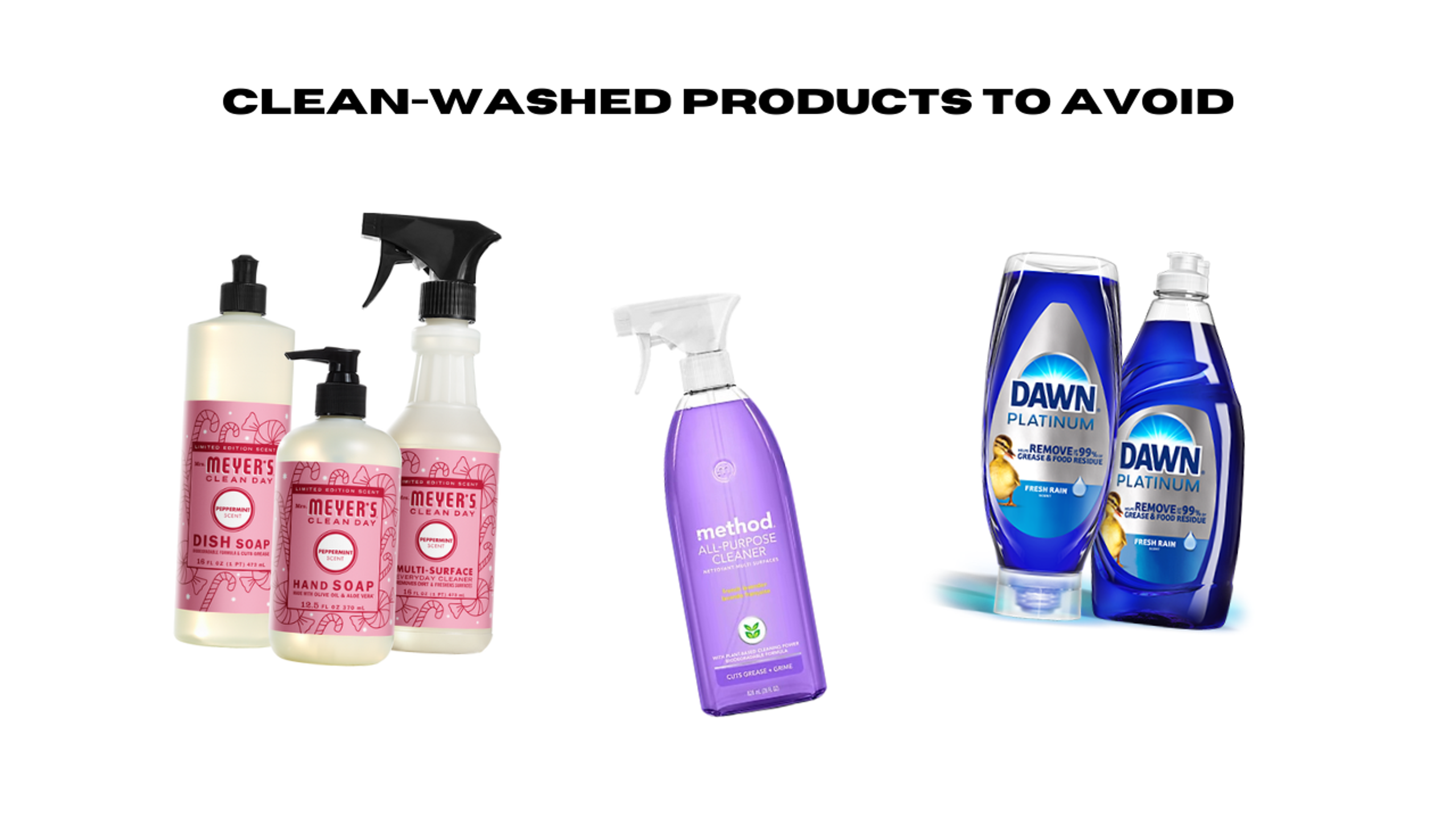
What to look for (and avoid) in a natural and non-toxic cleaner
So, now that you know about the nasty chemicals that may be hiding in your cleaning products… what should you be looking for?
What to look for:
- EWG rating: While not perfect, the Environmental Working Group (EWG) evaluates products for their ingredient quality and toxicity. Their app is a helpful tool! You can simply scan products and it gives a rating. I stick to EWG Certified, or products rated a 1 or 2.
- Fragrance-free (or clearly labeled scents): “Fragrance” is largely unregulated in the U.S. and can include hundreds of ingredients, many linked to endocrine disruption, cancer, and more. I allow high quality essential oils if they're listed. Keep in mind that “natural fragrance” doesn’t mean anything either.
- Plant-based surfactants: Generally, the fewer the ingredients, the better. I look for soap-based cleaners made from saponified plant oils (like potassium cocoate or sodium cocoate). It’s not a perfect method, but it helps avoid many questionable ingredients.
Ingredients to avoid altogether:
- 1,4-dioxane: A known carcinogen. It won’t be listed outright but is often found in ethoxylated ingredients with suffixes like "-eth", "PEG", "polyethylene", or "polyoxyethylene".
- Ammonia: Often found in glass cleaners; it can irritate the skin, eyes, and respiratory system.
- Chlorine: Long-term exposure is linked to lung irritation, thyroid disruption, and other health concerns.
- Formaldehyde: Used to preserve products, and yep—it’s the same stuff from high school dissection class. It’s a known carcinogen. Watch out for synonyms like formalin, methanal, or methylene glycol.
- Toxic fragrances: This “fragrance loophole” lets companies hide hundreds of chemicals. Many are linked to hormone disruption and even cancer.
- Phthalates: Used to make scents last longer. Look for DBP, DEP, and DEHP—these are linked to hormone imbalance, reproductive harm, and developmental issues in children.
- SLS (sodium lauryl sulfate): A foaming agent that can irritate the skin and is often contaminated with 1,4-dioxane. Look for synonyms like sodium dodecyl sulfate.
- Bleach: Common in disinfectants, bleach can release toxic fumes and cause serious irritation on its own.
- Triclosan: Found in “antibacterial” or “odor-fighting” products. Linked to hormone disruption, antibiotic resistance, and environmental toxicity.
Pro tip: Look for third-party certifications like Made Safe.
Top natural cleaning products
Best DIY cleaner: Castile soap (Dr. Bronner’s)
- Type: Liquid
- Price range: $10+
Using castile soap is such an underrated hack, in my opinion. It’s clean, natural, super budget-friendly, and lower waste—you’re not constantly buying new bottles. I buy it in bulk (Dr. Bronner’s or an EWG-certified gallon jug), dilute it with water, and pour it into glass spray bottles. You can use it for mopping, multi-surface cleaning, hand soap (just get a foaming dispenser), and even glass cleaning.

Branch Basics
- Type: Concentrate
- Price range: $50+ (for starter Concentrate)
Branch Basics is a cult-favorite for a reason. Their fragrance-free concentrate is plant-based, human-safe, and replaces virtually every cleaner in your home. You just dilute it in reusable bottles to make all-purpose spray, bathroom cleaner, hand soap, and more. It’s also Made Safe certified, cruelty-free, and EWG verified.

Blueland
- Type: Tablet
- Price range: $16+
Blueland is one of my favorite sustainability-focused brands. The tablets are fragrance-free and super easy to use—just drop one in a refillable bottle with water. Many of their products are EWG certified, and they’re free of phthalates, bleach, ammonia, and more. Their packaging is plastic-free, reusable, and low-waste. Plus, they’re a certified B Corp and carbon-neutral.
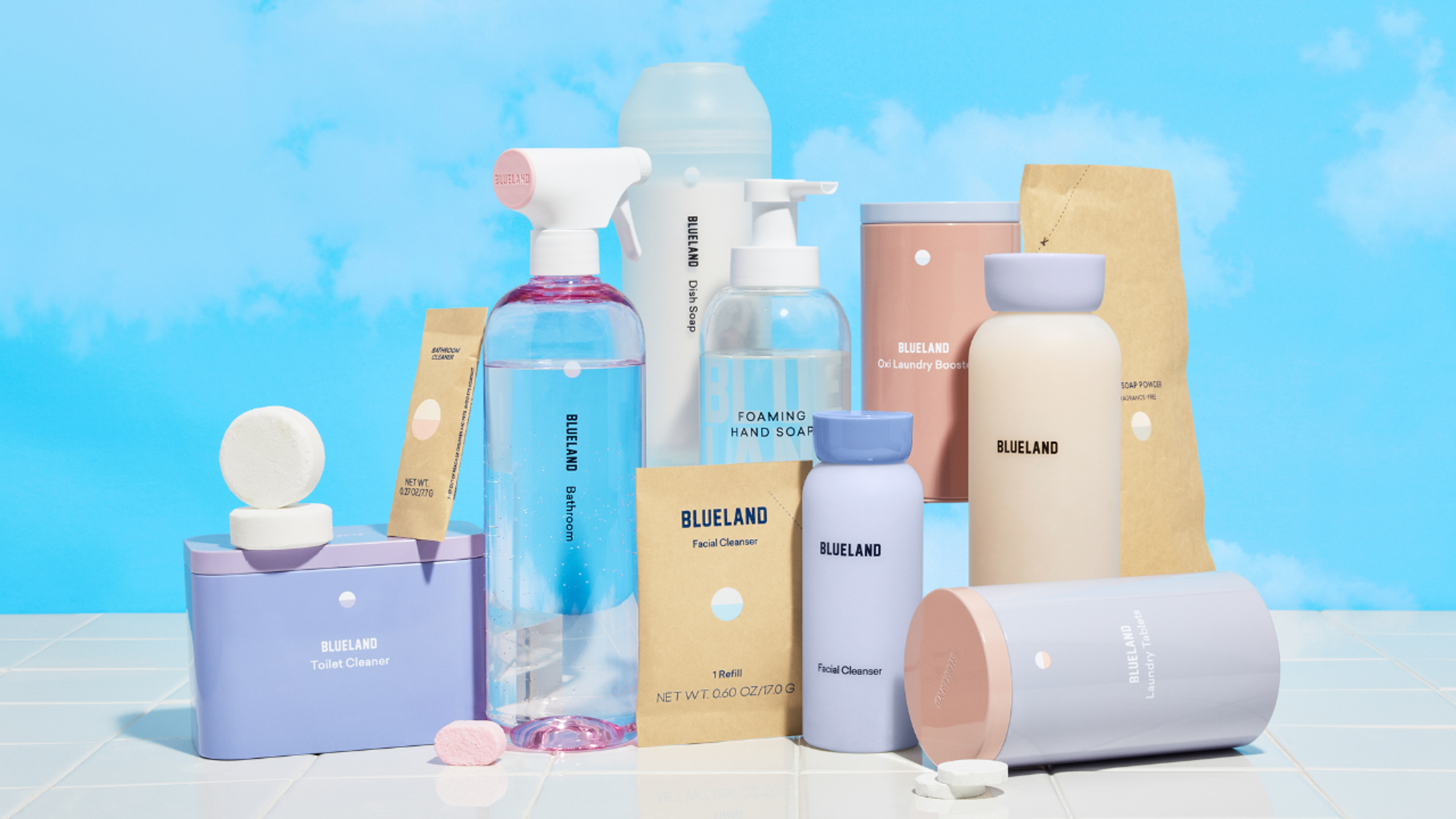
Aunt Fannie’s
- Type: Spray
- Price range: $11+
If you’re looking for a vinegar-based cleaner, this is a great pick. It’s plant-based, scented with essential oils, and ranks an “A” on EWG. It’s awesome for kitchens, ovens, and bathrooms. Just note: the vinegar smell can linger.
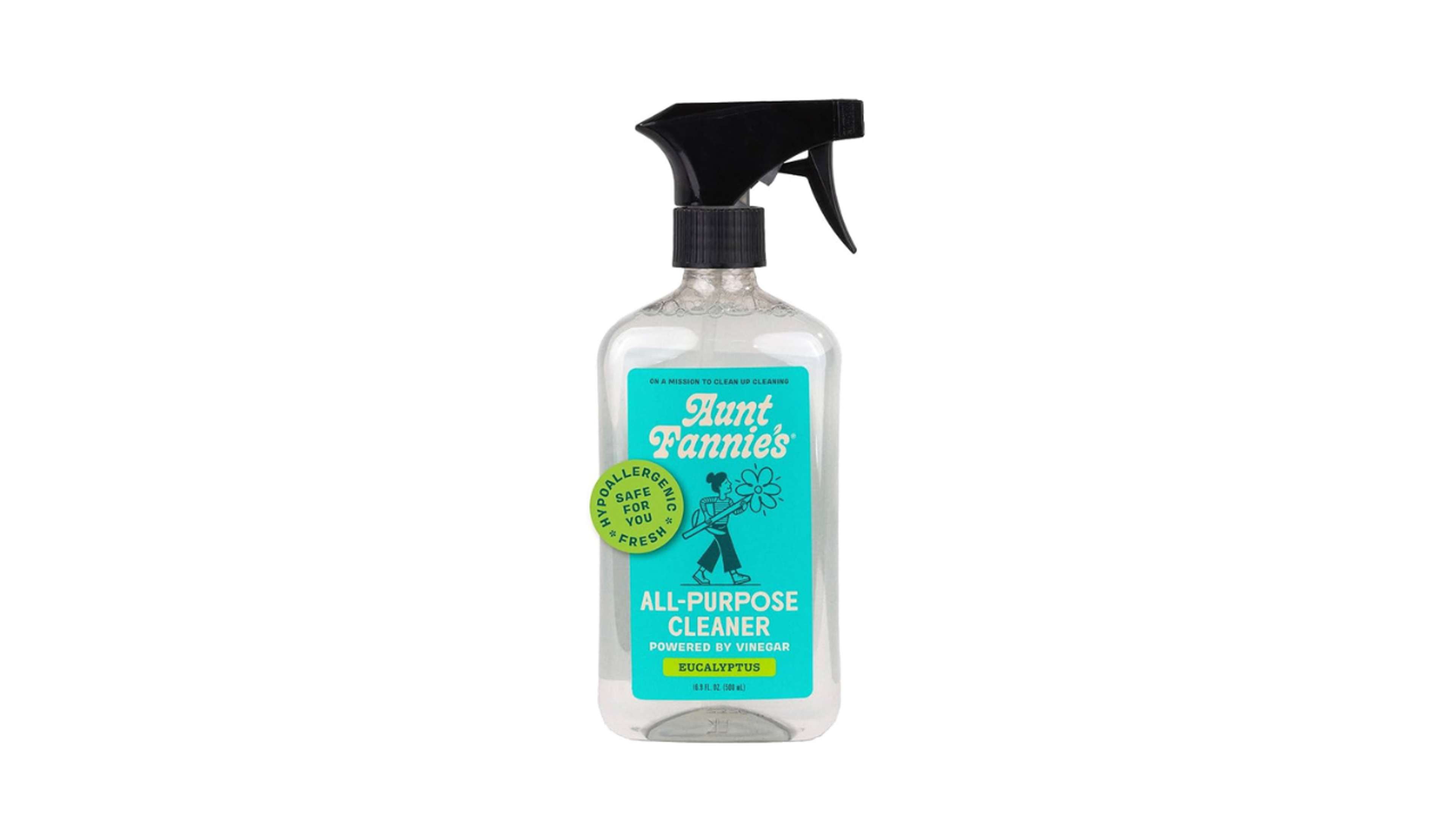
Puracy
- Type: Concentrate
- Price range: $20+
This cleaning product is doctor-developed, non-toxic, vegan, hypoallergenic, biodegradable, cruelty-free, and made in the USA. One bottle of concentrate makes a whole gallon of cleaner. They offer both unscented and Green Tea & Lime options.
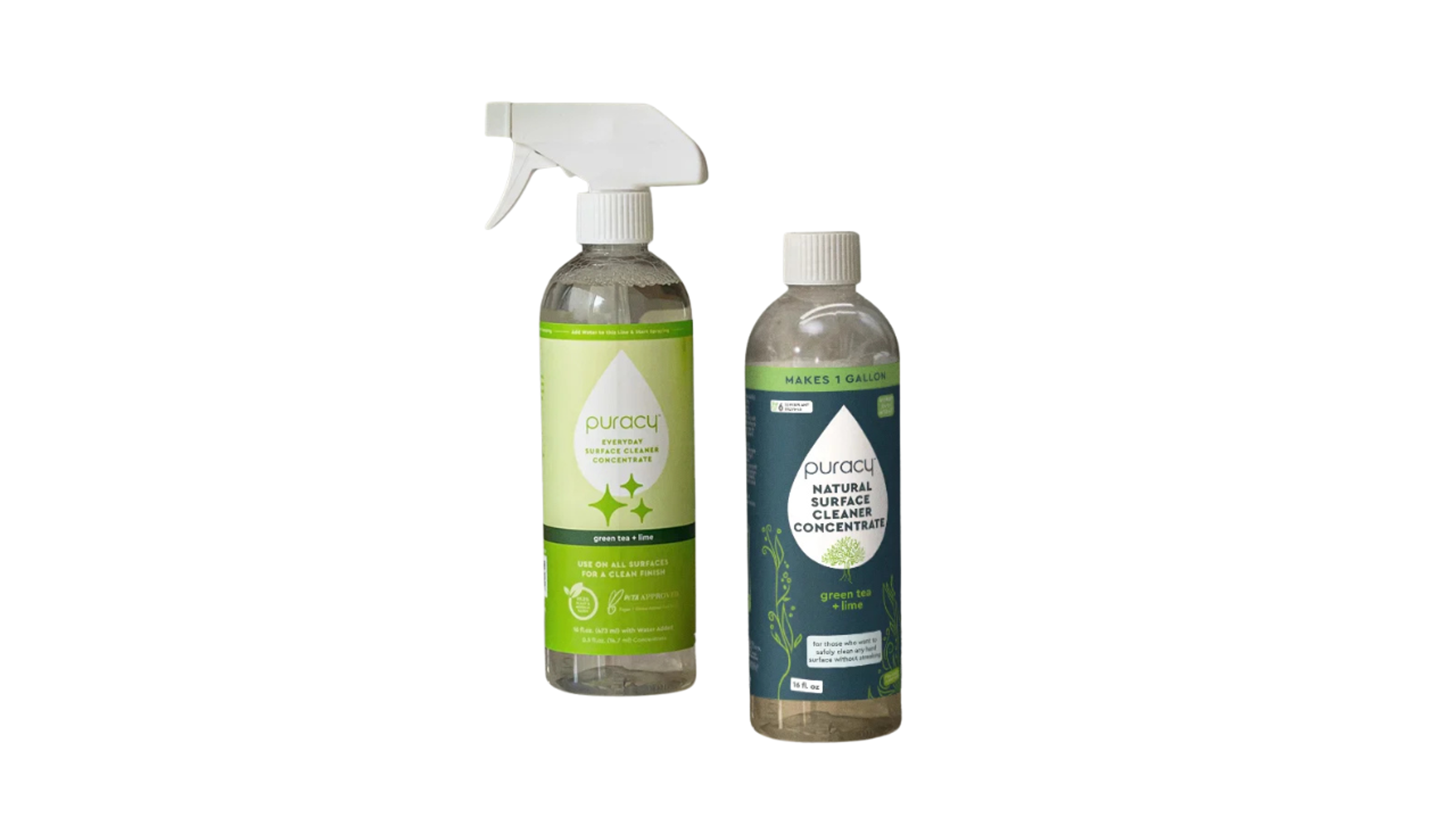
ATTITUDE
- Type: Spray
- Price range: $7–16+
Made from 94% natural ingredients, EWG verified, and climate-neutral. You can use it on countertops, marble, granite, floors, glass, and more. I love that it comes in recycled plastic or aluminum bottles, and they offer cardboard refills. Available in Citrus Zest, Grapefruit, or Lavender.
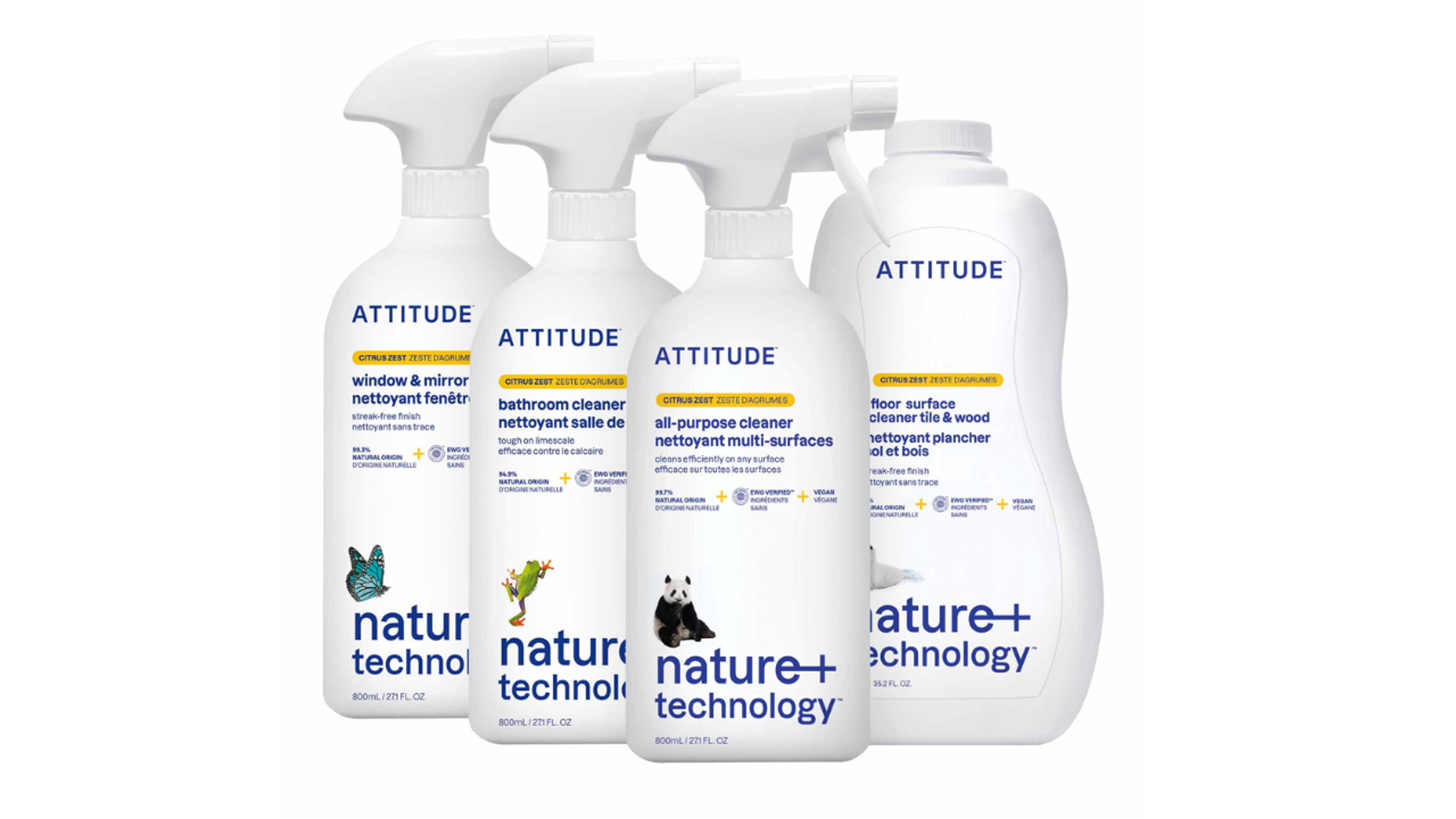
Seventh Generation
- Type: Spray
- Price range: $7+
Seventh Generation is what I’d call a “better” brand. They do have some greenwashed products, but the Free & Clear All-Purpose Cleaner is a solid pick. It’s fragrance-free, non-toxic, and rated “A” on EWG.
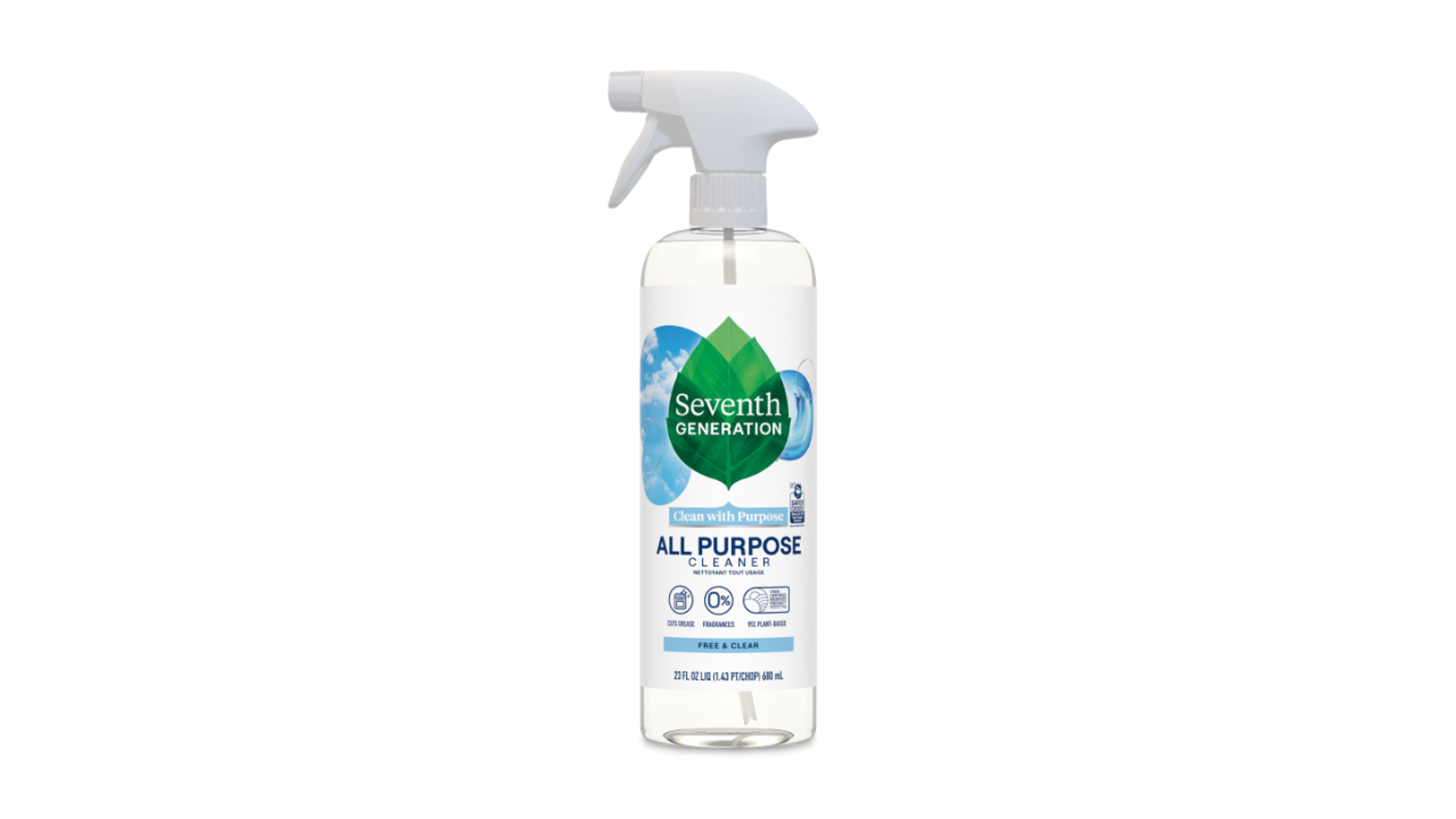
How to make your own natural cleaning products (DIY)
I mentioned it above, but my go-to DIY all-purpose cleaner is: castile soap. Simply mix a bit of castile soap and water in a glass spray bottle and get to cleaning! It really is that simple and easy. Beyond that, baking soda (I buy it in bulk!), vinegar, and essential oils are staples in my DIY cleaning toolkit.
- Baking soda + water = a paste for scrubbing cutting boards
- Vinegar + water = glass and window cleaner
- Baking soda + castile soap = a great tub, sink, or counter scrub
- Essential oils = optional, but great if you want a light scent (I am a big fan of Doterra! Please choose a high-quality essential oil, not all essential oils are actually made with good ingredients)
How to make the switch to all natural
As with anything in the non-toxic world, just take it one step at a time. Don’t toss everything all at once. Use up what you already have, then swap it out for a better option. I don’t like to create waste if I don’t have to—and refillables and concentrates are a great way to reduce it.
I’m a sucker for a good aesthetic, but don’t fall for clever marketing when it comes to choosing a natural cleaner. Just because something says “clean” or “eco-friendly” doesn’t mean it is.
If I missed a product or brand you love, let me know!
Related articles

Top healthy & clean protein powder (best brands!)
Not all protein powders are healthy. Many contain fillers, sweeteners, and even heavy metals. In this article, I break down the best healthy and clean...

Is your tap water toxic? How to choose the best water filters
Find the best water filters to remove PFAS, microplastics, lead, and more. Is your tap water really safe? Just because tap water meets legal standards...

Smell good, stay clean: Best natural & aluminum-free deodorants
Looking for a natural, aluminum-free deodorant that actually works? We break down the best clean deodorants that skip toxic ingredients like aluminum, parabens, and synthetic...


